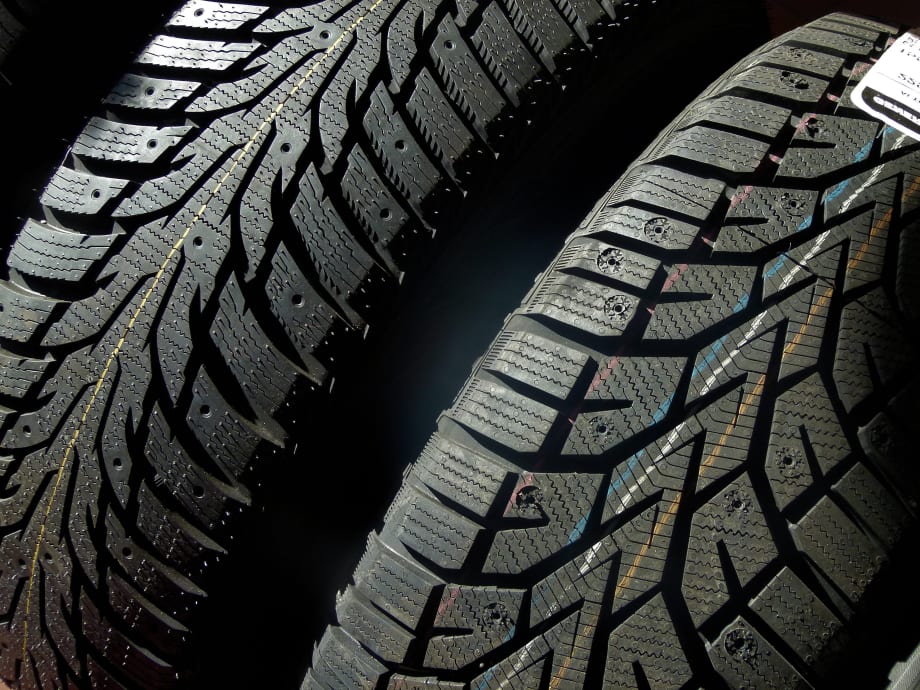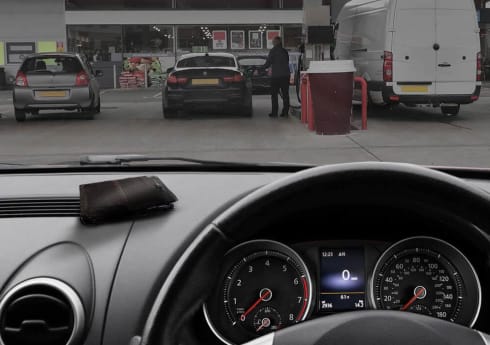Tyre Speed Ratings
Tyre speed ratings and load indexes are vital safety features of cars. This guide answers all the important questions you have about speed ratings and load indexes for tyres.
Your tyres are the only part of your vehicle that touches the road. This means all the expensive safety features in your vehicle – and your fantastic driving skills – will not help you if the tyres are wrong.
We present comprehensive information in easy-to-understand tables that allow you to quickly find ratings and indexes for your cars.

Credit: PXFuel
What is a tyre speed rating?
A tyre speed rating is the maximum speed you can safely drive on that tyre. A one-letter difference in speed rating corresponds to around 8 mph difference in the maximum speed you can safely drive.
Did you know there are insurance and legal consequences for using the incorrect ratings and indexes, that could lead to a driving ban and an unlimited fine for you or your drivers?
Tyre speed rating is something all drivers should be aware of and every fleet manager needs to have a clear understanding of it.
How do I find out the speed rating of my tyres?
The speed rating is usually a number followed by a letter, on the sidewall of your tyres AFTER the numbers representing the size of your tyres.

Tyre speed rating chart
The rating indicates the maximum speed (in mph and km/p) that a tyre can safely cope with.
| SPEED RATING | MPH | KM/H |
| A1 | 3 | 5 |
| A2 | 6 | 10 |
| A3 | 9 | 15 |
| A4 | 12 | 20 |
| A5 | 16 | 25 |
| A6 | 19 | 30 |
| A7 | 22 | 35 |
| A8 | 25 | 40 |
| B | 31 | 50 |
| C | 37 | 60 |
| D | 40 | 65 |
| E | 43 | 70 |
| F | 50 | 80 |
| G | 56 | 90 |
| J | 62 | 100 |
| K | 68 | 110 |
| L | 75 | 120 |
| M | 81 | 130 |
| N | 87 | 140 |
| P | 87 | 150 |
| Q | 100 | 160 |
| R | 106 | 170 |
| S | 112 | 180 |
| T | 118 | 190 |
| U | 124 | 200 |
| H | 130 | 210 |
| V | 149 | 240 |
| W | 168 | 270 |
| Y | 186 | 300 |
| (Y) | 186+ | 300+ |
Most cars and light vans fit into the tyre speed rating of S or T, which means they have safe limits of 112 or 118 miles per hour (180 or 190 kilometres per hour).
The speed ratings for wide diameter tyres – usually fitted to higher-performance vehicles – tend to be higher. Sports cars need tyres with speed ratings of W, Y or (Y).
Q is the speed rating most often found on winter tyres for 4×4 vehicles designed to cope with snow.
M and N tyres are temporary spares. It is extremely important to remember that you should drive more slowly than normal on these temporary spares – especially as one spare will not match the regular type on the other side of the axle, meaning your vehicle will likely skid sideways if you brake hard.
L tyres are typically for off-road vehicles and may be used on some light trucks.
Car tyres load index charts
What is the tyre load index from 62 to 83?
| Load index | Load (kg) |
| 62 | 265 |
| 63 | 272 |
| 64 | 280 |
| 65 | 290 |
| 66 | 300 |
| 67 | 307 |
| 68 | 315 |
| 69 | 325 |
| 70 | 335 |
| 71 | 345 |
| 72 | 355 |
| 73 | 365 |
| 74 | 375 |
| 75 | 381 |
| 76 | 400 |
| 77 | 400 |
| 78 | 400 |
| 79 | 400 |
| 80 | 400 |
| 81 | 400 |
| 82 | 400 |
| 83 | 400 |
What is the tyre load index from 84 to 105?
| Load index | Load (kg) |
| 84 | 500 |
| 85 | 515 |
| 86 | 530 |
| 87 | 545 |
| 88 | 560 |
| 89 | 580 |
| 90 | 600 |
| 91 | 615 |
| 92 | 630 |
| 93 | 650 |
| 94 | 670 |
| 95 | 690 |
| 96 | 710 |
| 97 | 730 |
| 98 | 750 |
| 99 | 775 |
| 100 | 800 |
| 101 | 825 |
| 102 | 850 |
| 103 | 875 |
| 104 | 900 |
| 105 | 925 |
What is the tyre load index from 106 to 126?
| Load index | Load (kg) |
| 106 | 950 |
| 107 | 975 |
| 108 | 1000 |
| 109 | 1030 |
| 110 | 1060 |
| 111 | 1090 |
| 112 | 1120 |
| 113 | 1150 |
| 114 | 1180 |
| 115 | 1215 |
| 116 | 1250 |
| 117 | 1285 |
| 118 | 1320 |
| 119 | 1360 |
| 120 | 1400 |
| 121 | 1450 |
| 122 | 1500 |
| 123 | 1550 |
| 124 | 1600 |
| 125 | 1650 |
| 126 | 1700 |
Tyre load index is a key detail for every driver and any fleet manager. The load rating is the maximum carrying capacity (in kg) that your tyre can safely deal with.
Tyre load index starts at 265kg (for small vehicles) and goes all the way up to 1700kg (for heavy-duty vehicles). You can find out what the load index is for your tyres by checking their sidewall — you’ll find the load index number to the right of the diameter of the tyre sidewall.
Read more on iCompario
Can I have a higher speed rating tyre on my car?
You can have a higher speed rating tyre on your car. If you are going to mix speed ratings, which we don’t recommend:
- All tyres must be appropriate for the vehicle and you should drive no faster than your lowest rated tyres.
- If you increase the speed rating, you must always have a matching pair of tyres of the same speed rating at either end of the axle. In other words, both front tyres must have the same speed rating as each other.
- Make sure the lower rated tyres are on the front axle to avoid the risk of oversteer. This applies whether your vehicle is front-, rear- or four-wheel drive.
Using a higher rated tyre won’t increase its usable lifespan.
Can I have a lower speed rating tyre on my car?

Credit: Pikist
You can’t have a lower speed rating tyre on your car. The best quality tyres – with a higher speed rating – have better braking, grip on wet roads, and more responsive steering. If you use tyres with the wrong speed rating, it could contribute to dangerous driving as steering response will undoubtedly be affected.
Choosing not to use the correct tyre rating doesn’t only lead to tyre failure. It also has severe insurance and legal consequences. Driving with a lower speed rating on your car can invalidate your insurance.
Driving without car insurance is an offence that can be punished by a £300 fine and six penalty points on your license, if you don’t go to court. If your case does go to court then you could receive an unlimited fine and be disqualified from driving.
Insurance is non-negotiable for all drivers, whether the car you’re using is for personal or business use. If you’re using a car for business purposes and it’s part of a fleet of vehicles, then you could benefit from motor fleet insurance.
Can I have a mixed speed rating tyre on my car?

Credit: Pikist
You can have a mixed speed rating tyre on your car, so long as all of the tyres you use meet the minimum requirements. This means you can have a mix of tyres that meet and exceed the minimum speed rating requirements, but not a blend that includes lower rated tyres.
If you do decide to get new tyres and use a mixed speed rating then it’s recommended that the tyres are matched across the axles. This is so you don’t have a different rating on either side of your vehicle, which can impair how the vehicle handles, including during an emergency stop.
Driving behaviour is something that’s important for any car user but it’s particularly so for fleet managers, as they’re responsible for multiple drivers.
If you’re a fleet manager and want to monitor how your drivers behave behind the wheel, you could benefit from using vehicle tracking systems and telematics. Depending on the technology and device you select, these tools provide you with data on a range of driving behaviours. These behaviours include speed, braking and cornering.
What is the maximum speed for tyre rating?

Credit: PXFuel
The maximum speed rating for tyres is 186+ mph, which is equivalent to 300+ km/p. This rating of 186+ mph is strictly for high-performance sports cars, meaning it’s inappropriate for most vehicles.
Most cars have a speed rating of either S or T for their tyres. An S rated tyre has a maximum speed of 112 mph, while a T rated tyre has a max speed of 118 mph. Given that a car’s maximum speed on UK roads is 70 mph, an S or T tyre is more than adequate for your needs.
Compare the best fuel cards for your company cars
iCompario is the free online marketplace for business products and services, where managers and owners can research and rapidly compare fuel cards, vehicle tracking systems, insurance, telecoms and other essentials. The team follows up online queries by telephone so every site visitor finds their ideal, future-proof product at the best price possible.
Using the wrong and poorly maintained tyres isn’t just dangerous, it’s also inefficient. Incorrect and poorly kept tyres reduce the fuel efficiency of your car, meaning you get fewer miles for the petrol or diesel you buy.
Fuel cards are a great way to help you manage the economy of your business vehicles, as they let you track every penny you (or your drivers) spend on diesel and petrol. Check out our fuel cards comparison page to learn more about how these cards can help your company.




